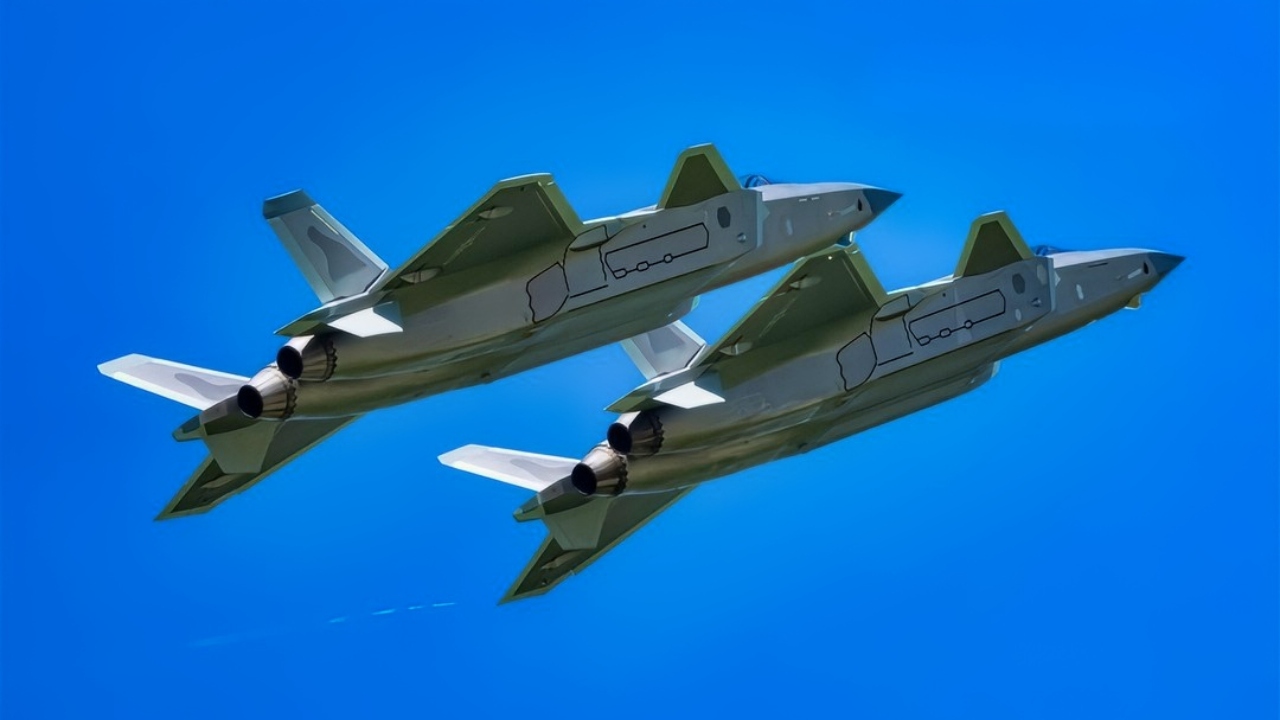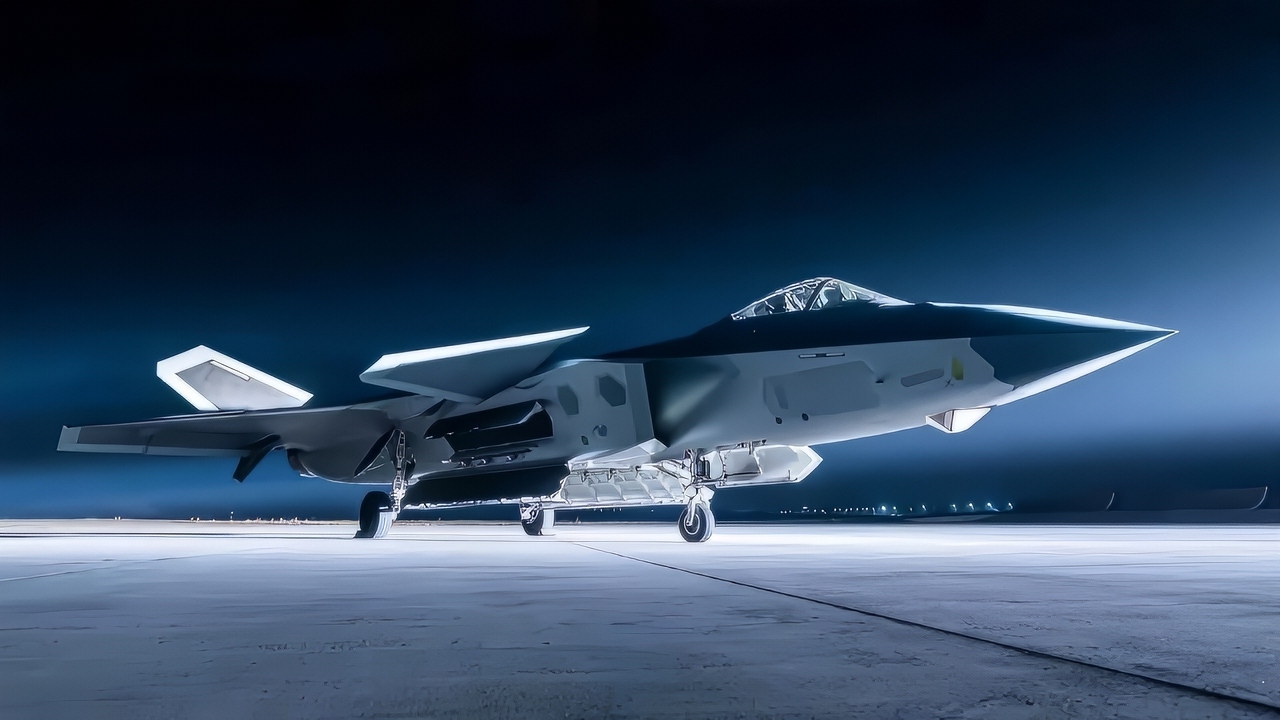PUBLISHED on August 12, 2025, 7:37 PM EDT – Key Points and Summary – In a hypothetical battle between a Cold War legend and a modern stealth fighter, the Chinese J-20 “Mighty Dragon” would decisively defeat the F-14 Tomcat.
-While the F-14 was a formidable interceptor in its day with its powerful radar and Phoenix missiles, its technology is now obsolete.

J-20 Fighter In Formation PLAAF Photo
-The J-20’s superior stealth, advanced AESA radar, and longer-range missiles like the PL-15 would allow it to achieve a “first look, first shot” kill long before the Tomcat could respond.
-The F-14’s only potential advantage would be its cannon in a close-range dogfight, an unlikely scenario in modern air combat.
China’s J-20 vs. F-14 Tomcat Would Be Epic
In our recent series on the J-20, we have paired the aircraft against many other airframes from various nations and generations.
Today, the J-20 is facing an opponent that is all but extinct at this point. The Gruman F-14 Tomcat is a fourth-generation multi-role fighter designed to operate on naval carriers.
The fighter was retired from service in the U.S. in 2006 but remained active in the Islamic Republic of Iran Air Force (IRIAF).
In a hypothetical scenario, which aircraft would win in a battle between the F-14 and J-20?

F-14 Tomcat. Image Credit: Creative Commons.
The Tomcat vs the Mighty Dragon
The F-14 Tomcat was introduced in 1974 and served until it retired from the U.S. Navy in 2006.
It was designed primarily as a fleet defense interceptor, capable of engaging enemy aircraft at long distances before they could threaten naval assets.
Its most distinctive feature was its variable-sweep wings, which allowed it to optimize performance across a wide range of speeds and flight conditions. The aircraft was crewed by a pilot and a radar intercept officer, and it carried the powerful AN/AWG-9 radar system, which could track multiple targets at long range. The Tomcat’s primary weapon was the AIM-54 Phoenix missile, which could engage targets over 100 nautical miles away—an unprecedented capability at the time.
Compared to the F-14, the Chengdu J-20 is an entirely different beast. First flown in 2011 and entering service in 2017, the J-20 was designed to counter American fifth-generation fighters, such as the F-22 and F-35.

J-20 with PL-15 Missile. Image Credit: Creative Commons.
Its canard-delta wing configuration provides high maneuverability, while its stealth shaping and internal weapons bays reduce its radar cross-section.
The J-20 is equipped with an active electronically scanned array (AESA) radar and an infrared search and track (IRST) system, enabling it to detect and engage targets without relying solely on radar.
It also features modern data fusion and networked warfare capabilities, enabling it to operate effectively in highly contested battle spaces.
Performance and Avionics
When comparing performance metrics, the F-14 has a top speed of Mach 2.34 and a service ceiling of 53,000 feet. It was powered by twin engines that produced a combined thrust of approximately 56,400 pounds.
The J-20, although slightly slower at Mach 2.0, boasts a higher service ceiling of approximately 66,000 feet and more powerful engines that produce around 64,000 pounds of thrust. The F-14’s range was about 1,600 nautical miles, while the J-20’s combat radius is estimated at around 1,100 nautical miles, though this can vary depending on mission profile and payload.
In terms of avionics and weapons, the F-14’s systems were cutting-edge for their time but are now considered outdated. Its radar was analog-based, and while the AIM-54 Phoenix missile was formidable, it lacked the guidance and data-link capabilities of modern missiles.
The J-20, on the other hand, carries the PL-15 missile, which is believed to have a more extended range than the AIM-120 AMRAAM and features active radar homing and mid-course updates. For close-range combat, the J-20 uses the PL-10 missile, which is highly maneuverable and guided by helmet-mounted sights. Interestingly, the J-20 reportedly lacks an internal cannon, which could be a disadvantage in dogfights where guns are still relevant.
The J-20 Wins by a Landslide
In a hypothetical air combat scenario, the outcome would depend heavily on the engagement range and tactical environment. In a beyond-visual-range (BVR) engagement, the J-20 would likely have a decisive advantage.
Its stealth design would make it difficult for the F-14 to detect and track it, especially with the older radar systems the Tomcat uses. The J-20’s advanced sensors and long-range missiles would allow it to engage the F-14 before the Tomcat could respond effectively. The ability to operate in a networked environment, sharing data with other aircraft and ground stations, further enhances the J-20’s situational awareness and combat effectiveness.
In a within-visual-range (WVR) dogfight, the F-14 has a slightly better chance. Its variable-sweep wings and powerful engines provide it with excellent agility and acceleration, making it a formidable opponent in close-quarters combat.
The Tomcat also carries a 20mm Vulcan cannon, which remains a reliable weapon in dogfights. The J-20’s maneuverability is enhanced by its canard configuration and thrust vectoring in newer variants.
Still, the lack of a gun could be a limiting factor if missiles fail to hit their target. Still, modern air combat rarely devolves into WVR engagements due to the lethality and precision of BVR missiles, as well as the emphasis on stealth and electronic warfare.
While the F-14 Tomcat is a beautiful aircraft, it is sadly outclassed by the Chengdu J-20 in nearly every relevant aspect. The J-20’s stealth, sensors, weapons, and networked capabilities give it a decisive edge, especially in BVR engagements where the F-14’s older systems would struggle to compete.
The only scenario in which the F-14 could stand a chance would be in a situation where the F-14 has support from AEW&C and electronic warfare aircraft. In this scenario, the supporting aircraft would make up for the F-14’s antiquated systems while making it harder for the J-20 to find and eliminate the Tomcat.
Considering that Iran is the only one that still fields the F-14, this scenario is unlikely.
About the Author: Isaac Seitz
Isaac Seitz, a Defense Columnist, graduated from Patrick Henry College’s Strategic Intelligence and National Security program. He has also studied Russian at Middlebury Language Schools and has worked as an intelligence Analyst in the private sector.
Military Matters
The F-22 Raptor Just Keeps Getting Better










